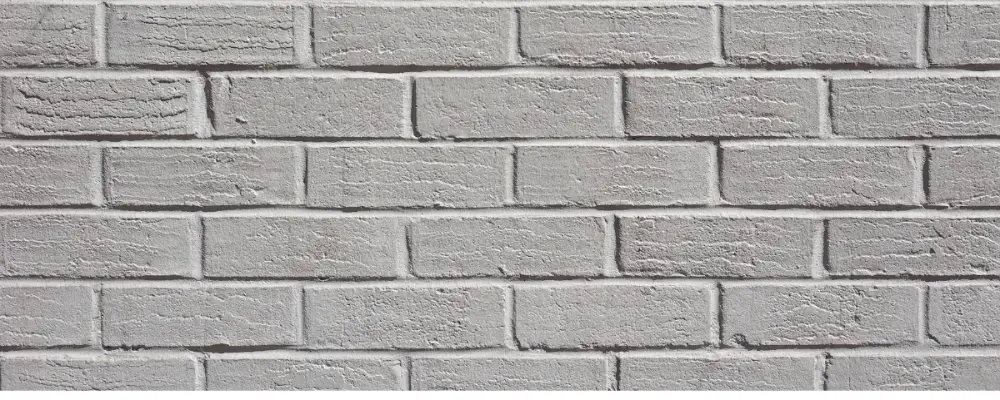Brick bonding is a process of arranging the bricks in a certain pattern, that forms a wall or a structure. These bonds give more physical and mechanical benefits for the structure, including the strength, stability, and aesthetic properties. There are different types of bonds and each has its unique characteristics, properties, and applications. Among all the bonds, the stack bond is a very basic type but gives a more modern look to the structure, when bound together. Here we take a look at what a stack bond is, its applications, the laying procedure, its pros, cons, and more!
What is a Stack Bond?
A stack bond is a type of brickwork in which the bricks are arranged in a simple, vertical alignment, one over the other. The bricks are laid on the long sides (stretchers) as the face of the walls. The arrangement of these bricks forms a continuous vertical pattern that runs through the length of the wall. These are basic bonding types and are easy to lay. They are used in non-load-bearing walls and decorative structures.
Application of Stack Bond
- These bonding patterns are used for modern residential and commercial buildings, which prefer aesthetically pleasing exterior and interior designs.
- These bonds are used to build accent walls and create more attractive interior designs in bedrooms, hallways, dining rooms, etc.
- These types of bonds are widely popular for their decorative purposes in garden walls, partition walls, and other non-load-bearing structures.
- These bonds, when combined with a steel structure and reinforced cement concrete, can be employed for walls that bear a medium load.
- These bonding patterns are not only ideal for bricks but also for blocks and tiles.
Advantages and disadvantages of Stack Bond
Advantages
- These bonds are pretty basic and easy to lay, and they do not require any skilled labor to lay the brick one over the other.
- These bonds give the construction a modern look and make it more pleasing to the eyes.
- These bonds gain strength when combined with steel structures or reinforcement. This gives the bond to create the ability to withstand medium loads.
- These configurations create a more classic look to the structure, with clear vertical and horizontal linings.
- The stack bond requires low maintenance, as they are easy to wash, and the structure can be cleaned quickly and effectively.
- Fewer bricks are wasted, as they don’t need brickbats.
Disadvantages
- These bricks are not so strong compared to the other bonding types. As all the bricks are stacked one over the other, the chances of the structure collapsing are high.
- The concentrated loads cannot be distributed evenly across the head joints horizontally, as the bricks are laid one over the other. The loads are only distributed vertically and not horizontally.
- The stack bonds are primarily suitable only for non-load-bearing walls, that carry zero load or minimal load. Since the bricks stacked up themselves represent a concentrated load, they have poor stability.
Properties of Stack Bond
- The bricks are laid directly on top of another brick with mortar joining both bricks.
- These brick pattern runs vertically down throughout the wall and gives the appearance of an Excel sheet.
- These bonds are weak and primarily used for non-load-carrying walls.
- Some stack bonds are aligned with joint reinforcement in the horizontal course to give more strength to the structure by distributing the load evenly.
How to Lay a Stack Bond?
- Prepare the ground or bed to lay the mortar, where the structure needs to be constructed.
- Lay the mortar of the required consistency on the surface and place the brick with a stretcher facing the wall.
- Place all the bricks with the stretchers facing the wall in the horizontal course, leaving small gaps for the mortars to join the bricks.
- Use a plumb bob and a straightedge to check if the bricks are arranged both vertically and horizontally.
- Lay the mortar over the underlying bricks, setting the bed for the overlay bricks.
- Continue the layering of bricks by stacking one brick over the other over the mortar and checking the levels using the level bob.
- For structural walls, a horizontal wire reinforcement is placed on the alternate course, to make the bond distribute concentrated loads more evenly.
Conclusion
Stack bonds are more uniformly distributed, aesthetically pleasing walls, that are usually used for non-load-bearing structures. This brickwork requires less effort in case of laying and maintaining. Although they are more attractive in design, they cannot be used for structural walls and load-barring structures, due to their poor load distribution. Now, it is not a concern, as a combination with reinforcement walls, gives it a property similar to running bond. The stack bond with reinforcement can be used for structural walls and can be employable in high seismic conditions and hurricane areas.

